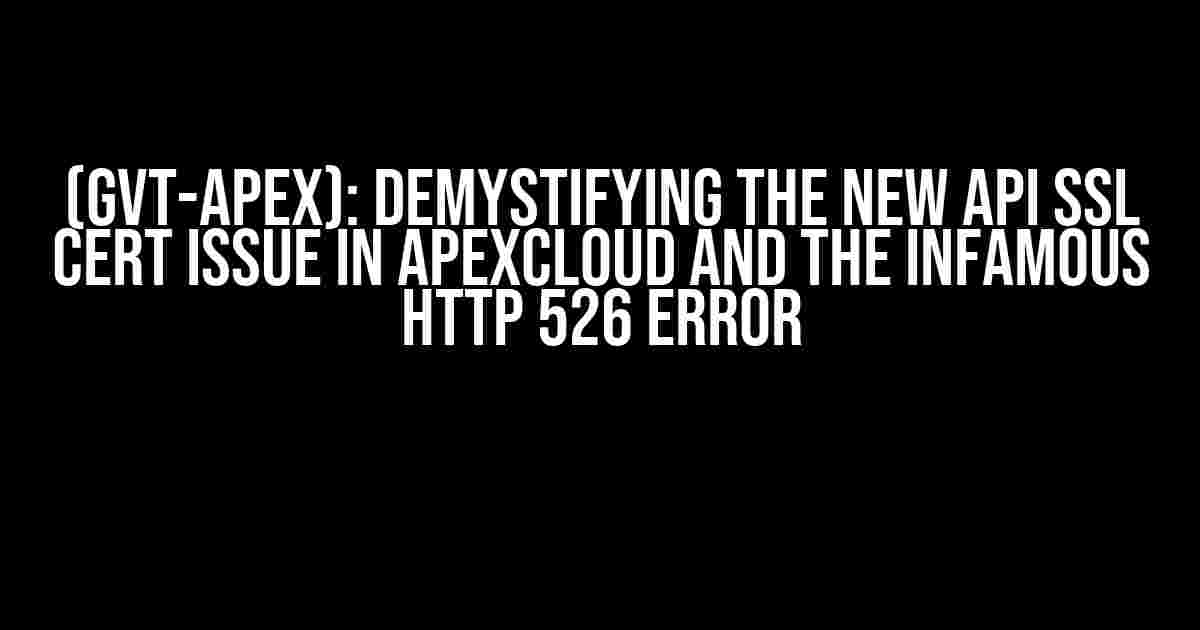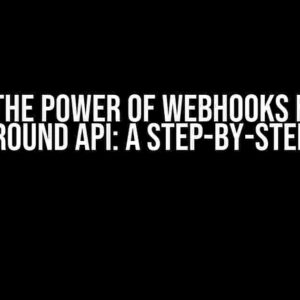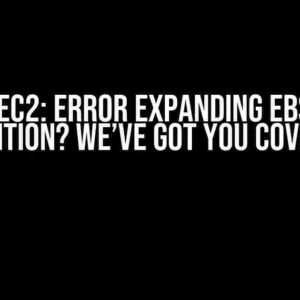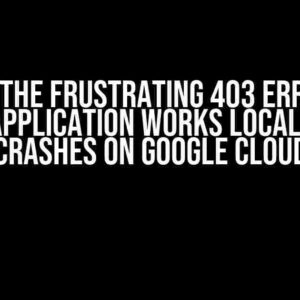Are you tired of encountering the dreaded HTTP 526 error in ApexCloud, only to discover that it’s related to a New API SSL Cert issue? Well, buckle up, friend, because we’re about to dive into the world of certificates, APIs, and cloud computing to get to the bottom of this frustrating problem.
What is the GVT-Apex API and Why Does it Matter?
In the realm of ApexCloud, the GVT-Apex API plays a crucial role in facilitating seamless interactions between various applications and services. It acts as a bridge, allowing data to flow effortlessly between different systems, enabling the creation of robust, scalable, and efficient solutions. But, what happens when this bridge starts to malfunction?
The New API SSL Cert Issue: A Primer
SSL certificates are the unsung heroes of the digital world. They ensure that data transmitted between servers and clients remains encrypted, maintaining the integrity and confidentiality of sensitive information. In the context of ApexCloud, SSL certificates are used to secure communication between the GVT-Apex API and its clients.
So, what’s the big deal about the New API SSL Cert issue? Simply put, when this issue arises, the SSL certificate used by the GVT-Apex API becomes invalid or expired, causing a breakdown in communication between the API and its clients. This, in turn, leads to the dreaded HTTP 526 error – a frustratingly vague error code that offers little insight into the root cause of the problem.
Diagnosing the Issue: Identifying the Culprits
To tackle the New API SSL Cert issue, it’s essential to understand the possible causes behind it. Here are some common culprits to look out for:
- Expired or Invalid SSL Certificate: This is the most common cause of the New API SSL Cert issue. When an SSL certificate expires or becomes invalid, the GVT-Apex API can no longer establish a secure connection with its clients, resulting in the HTTP 526 error.
- Misconfigured Certificate Chain: A misconfigured certificate chain can also lead to the New API SSL Cert issue. Ensure that the intermediate certificates are properly chained to the root certificate to avoid any issues.
- Incorrect Certificate Formats: Using incorrect certificate formats can cause the GVT-Apex API to reject the SSL certificate, leading to the HTTP 526 error. Make sure to use the correct formats, such as PEM or PFX.
Resolving the Issue: Step-by-Step Guide
Now that we’ve identified the possible causes, let’s dive into the nitty-gritty of resolving the New API SSL Cert issue:
Step 1: Verify the SSL Certificate
Use tools like OpenSSL or SSL Labs to verify the SSL certificate used by the GVT-Apex API. Check the certificate’s expiration date, subject, and issuer to ensure it’s valid and correctly configured.
openssl s_client -connect api.apexcloud.com:443
Step 2: Update or Renew the SSL Certificate
If the SSL certificate has expired or is invalid, update or renew it as soon as possible. You can obtain a new certificate from your certificate authority (CA) or use a certificate management tool to automate the process.
Step 3: Configure the Certificate Chain
Ensure that the intermediate certificates are properly chained to the root certificate. You can use tools like OpenSSL to create a certificate chain.
openssl rsa -in private.key -out private.pem openssl x509 -in public.crt -out public.pem
Step 4: Update the GVT-Apex API Configuration
Update the GVT-Apex API configuration to point to the new or renewed SSL certificate. This may involve updating the certificate paths, formats, or settings in the API’s configuration files.
Step 5: Test the GVT-Apex API
Test the GVT-Apex API to ensure that it’s functioning correctly and the HTTP 526 error has been resolved. You can use tools like Postman or cURL to send API requests and verify the responses.
| API Endpoint | HTTP Method | Expected Response |
|---|---|---|
| https://api.apexcloud.com/users | GET | 200 OK |
| https://api.apexcloud.com/orders | POST | 201 Created |
Conclusion
The New API SSL Cert issue in ApexCloud can be frustrating, but it’s not insurmountable. By following the steps outlined in this guide, you should be able to identify and resolve the issue, ensuring that your GVT-Apex API is up and running smoothly.
Remember, SSL certificates are a critical component of modern web applications, and it’s essential to ensure they’re properly configured and up-to-date. By taking proactive measures to monitor and maintain your SSL certificates, you can avoid the dreaded HTTP 526 error and ensure a seamless user experience for your customers.
So, the next time you encounter the New API SSL Cert issue, don’t panic! Take a deep breath, grab a cup of coffee, and follow the instructions outlined in this guide. With a little patience and perseverance, you’ll be back up and running in no time.
Bonus Tip: Automate SSL Certificate Management
To avoid future SSL certificate-related issues, consider automating your SSL certificate management using tools like Let’s Encrypt, SSLMate, or AWS Certificate Manager. These tools can help you obtain, renew, and manage your SSL certificates, ensuring that your GVT-Apex API is always secure and up-to-date.
sudo certbot certonly --dns-google --dns-google-credentials ~/.secrets/certbot/google-dns.json --dns-google-propagation-seconds 120 -d api.apexcloud.com
By following the instructions outlined in this guide, you’ll be well on your way to resolving the New API SSL Cert issue and ensuring a secure, scalable, and efficient GVT-Apex API. Happy coding!
Frequently Asked Question
Are you encountering issues with the new API SSL cert in Apexcloud and receiving an HTTP 526 error? Worry not! We’ve got you covered with these frequently asked questions.
What is the gvt-apex error, and why am I seeing it?
The gvt-apex error is related to the new API SSL cert issue in Apexcloud. It occurs when there’s a misconfiguration or mismatch between the SSL certificate and the API endpoint, resulting in an HTTP 526 error. This error prevents your API from functioning correctly, causing disruptions to your application or service.
What causes the HTTP 526 error in Apexcloud?
The HTTP 526 error is typically caused by issues with the SSL/TLS certificate, such as an invalid or expired certificate, certificate mismatch, or incorrect certificate configuration. Additionally, incorrect API endpoint configuration, firewall restrictions, or network connectivity problems can also contribute to this error.
How do I resolve the gvt-apex error and HTTP 526 issue in Apexcloud?
To resolve the issue, ensure that the SSL/TLS certificate is valid, correctly configured, and matches the API endpoint. Verify that the API endpoint is correctly configured and reachable. You can also try updating the SSL certificate, checking firewall rules, and ensuring network connectivity. If the issue persists, contact Apexcloud support for further assistance.
What steps can I take to prevent future occurrences of the gvt-apex error?
To prevent future occurrences, regularly monitor your SSL/TLS certificate expiration dates and renew them promptly. Ensure that API endpoint configurations are correct, and firewall rules are updated accordingly. Regularly test your API connections to identify potential issues before they become critical.
What should I do if I’m still experiencing issues after troubleshooting the gvt-apex error?
If you’ve tried troubleshooting and the issue persists, contact Apexcloud support for further assistance. Provide detailed logs and error messages to help their support team accurately diagnose and resolve the issue. Remember to also check the Apexcloud status page for any known issues or maintenance activities that might be contributing to the problem.





